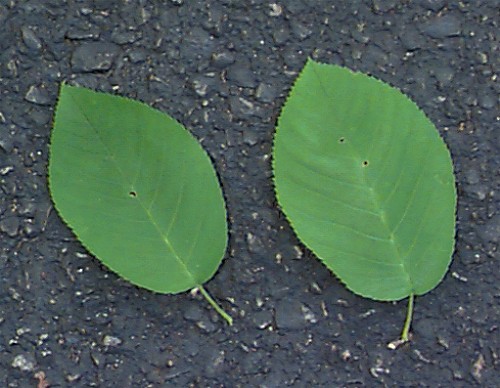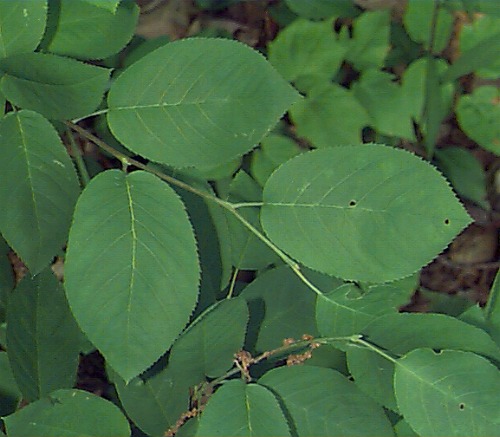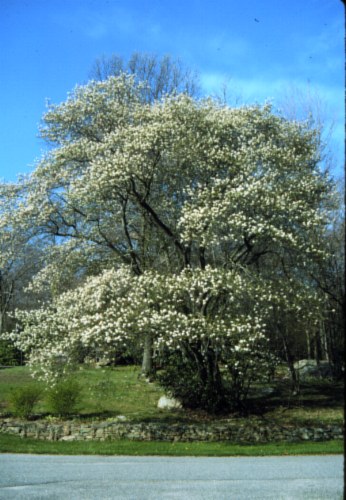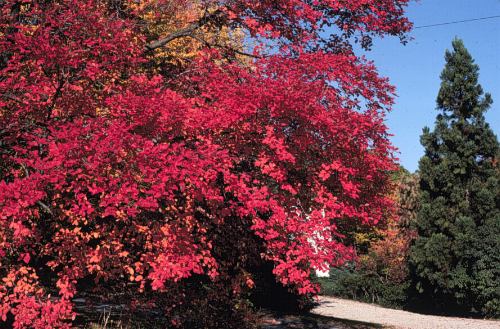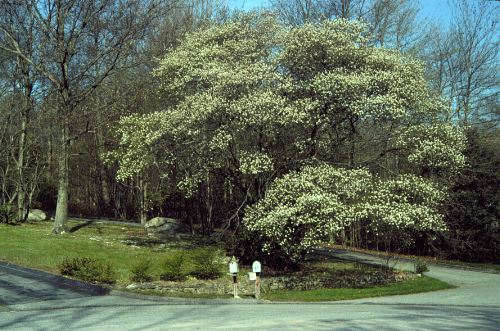Amelanchier arborea
Downy Serviceberry, Shadbush
Rosaceae
ExpandHabitat
- native to northeastern United States down through Florida and across to Iowa
- hardy to zone 4
Habit and Form
- a deciduous, small tree or large shrub
- 15' to 25' tall
- multi-stemmed
- rounded crown
- medium texture
- medium growth rate
Summer Foliage
- deciduous simple leaves
- alternate leaf arrangement
- elliptic leaf shape
- 1" to 3" long
- serrated leaf margin
- medium green leaf color
Autumn Foliage
- yellow-orange to red fall color
- colors early and leaves fall early
Flowers
- white flowers
- flowers borne in pendulous racemes
- 2" to 4" long
- blooms early spring
- showy but short-lived
Fruit
- red fruit
- pome fruit
- 0.25" to 0.33" in diameter
- ripens in June
- favorite of birds
Bark
- smooth, grayish bark
- "striped" with vertical fissures
- very ornamental
- olive-green young stems
Culture
- transplant from container
- prefers moist, well-drained, acidic soil
- full sun to partial shade
- tolerant of pollution
- thrives in wet site
Landscape Uses
- for bark effect
- specimen planting
- small grouping
- flower effect
- naturalized areas
- wet sites
- background or screen
Liabilities
- rusts, scales, aphids and mildews
ID Features
- cordate leaf base
- long, pointed terminal buds, 0.5' long
- reddish buds are imbricate with silky hairs
- white flowers held in long racemes
- red, edible fruit
- alternate leaf arrangement
Propagation
- by seed
- by cuttings
Cultivars/Varieties
No selections of this species are commonly offered, but see listings under the other Amelanchier species.
